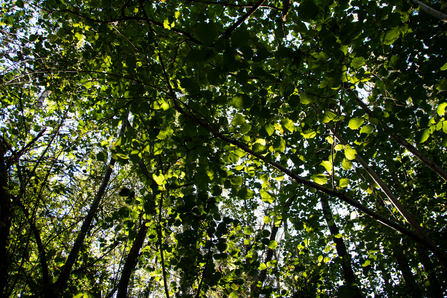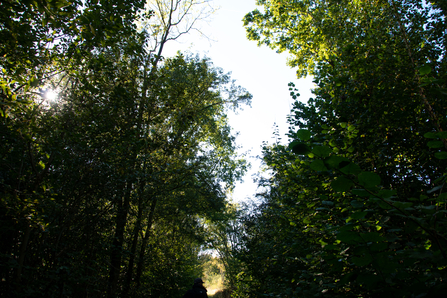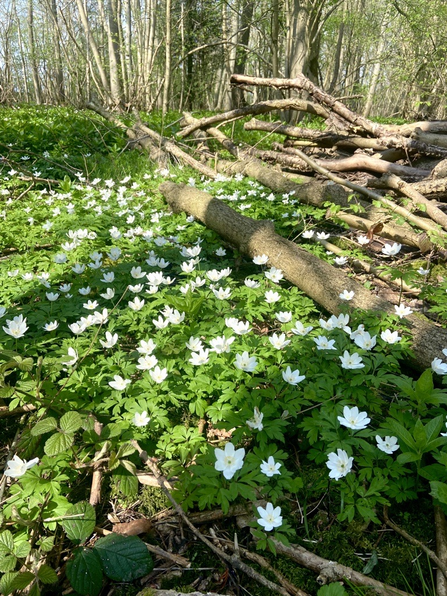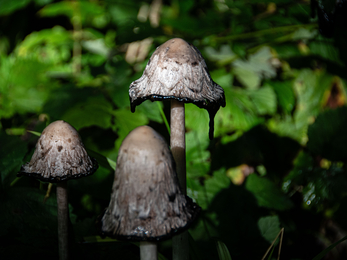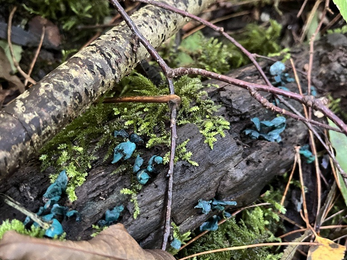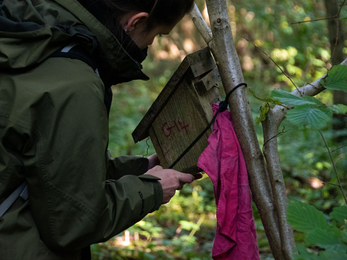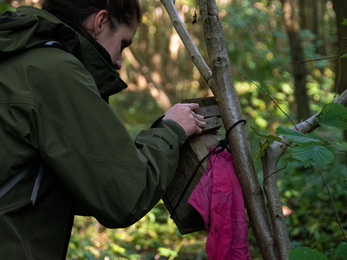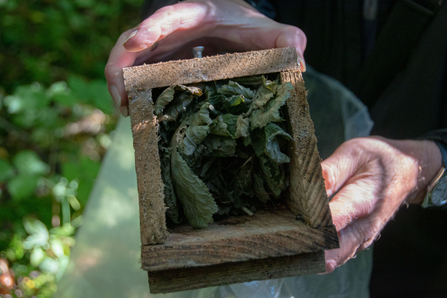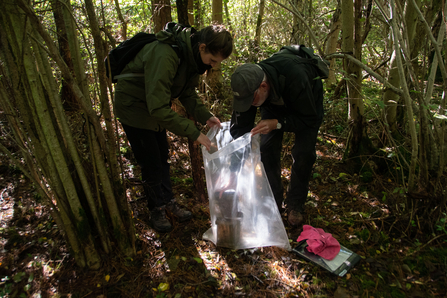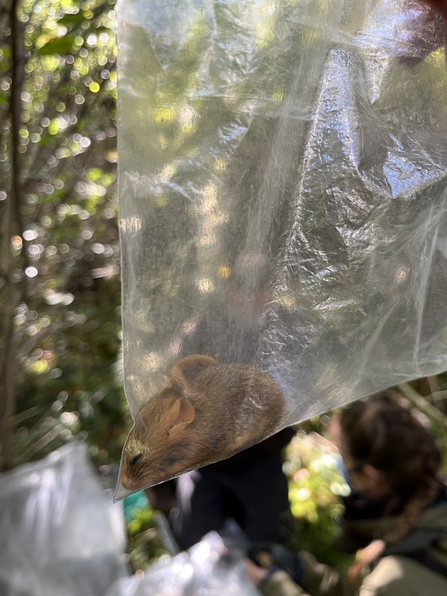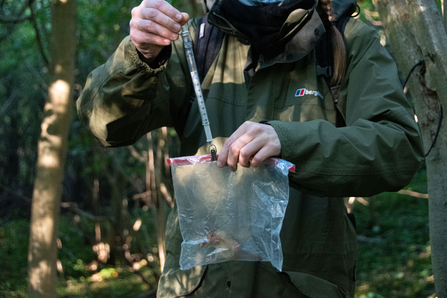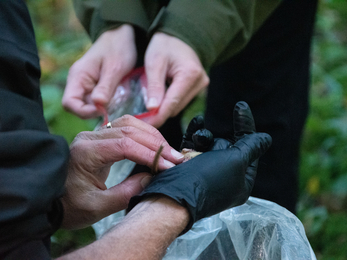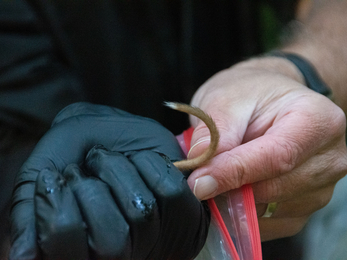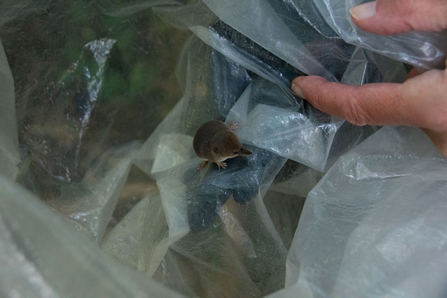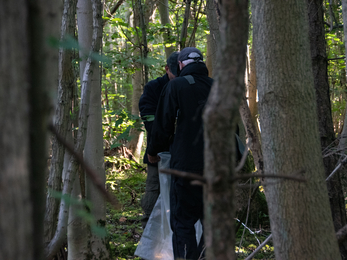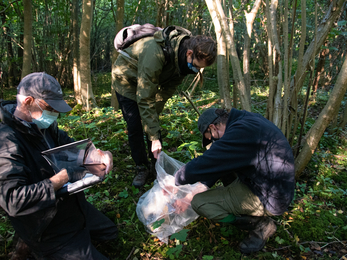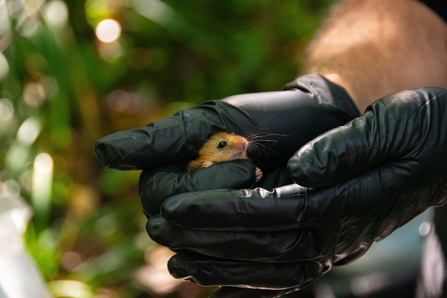After an unseasonably warm week, I wasn’t expecting to have to de-ice my car on this mid-October morning, but a sudden chill had hit. It finally felt like autumn! It turned into the most beautiful day of blue skies and bright sunshine but was still cold enough to see your breath - my favourite kind of weather.
I was joining the Nottinghamshire Dormouse Group, a group of local volunteers founded in 2013 as part of the PTES Dormouse Reintroduction Project. They lead on monitoring the reintroduced hazel dormouse population on our nature reserves and the wider landscape. The checks I was about to get involved with are undertaken as part of the National Dormouse Monitoring Programme and with a recent report finding that dormice have undergone significant declines, the data we collect is used to inform dormouse conservation.


